
…is that they established a pretty good grip on the phone, allowing for recharging in situations that would otherwise be impossible:
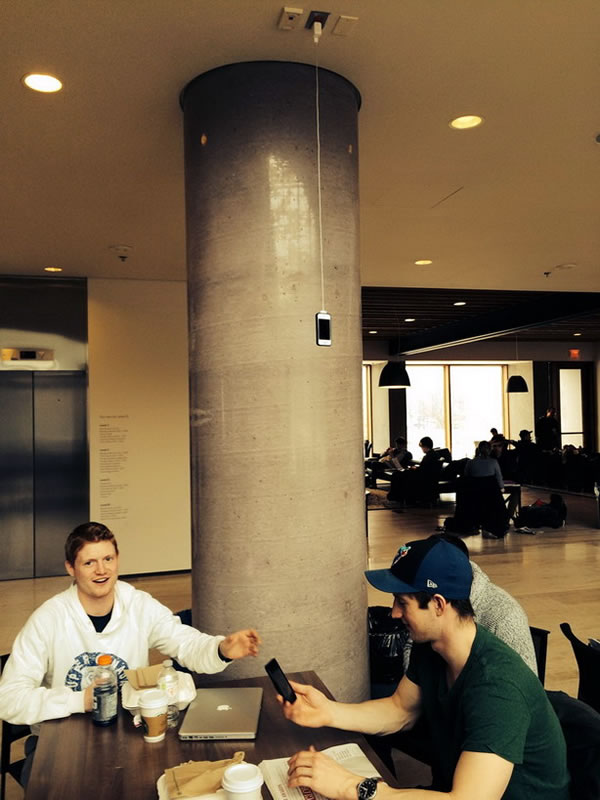
I’d still put something soft and cushiony under that dangling iPhone, just in case.
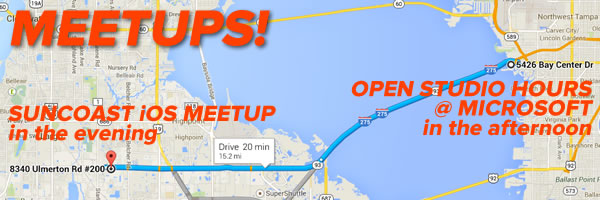
I’ll be at a couple of Accordion Bay tech meetups tomorrow, and I’ve compiled a list of upcoming area meetups as well…
Local Microsoft Tech Evangelist Joe “devfish” Healy is hosting open studio hours at Microsoft’s Tampa offices (5426 Bay Center Drive), from 10:00 a.m. to 6:30 p.m., where people can drop in, visit, work on a project, socialize, play board games (Joe apparently stand undefeated at Carcassone), and do general co-work-y stuff. At 6:30 p.m., it turns into a board games meetup. Here’s the meetup page for this get-t0gether.
I’ll be there in the afternoon to say “hi” to Joe and get some work done, after which I’ll head to…
The Suncoast iOS Meetup is having its meetup at American Business Center (8340 Ulmerton Rd. Suite 200, Largo) at 7:00 p.m., and the topic is “App Showcase and Open Discussions”. Here’s the meetup page for this get-together.
Other upcoming Tampa Bay area meetups include:

With smartphone ownership in the US hitting nearly 60% at the start of this year, and data usage among those smartphone users climbing, it’s only expected that the war between wireless carriers is heating up. In this installment of our regular look at the wireless carrier industry, we provide an introduction to the two major fronts what they’re fighting over: customers and spectrum.

The rise of the smartphone raised the stakes for wireless carriers, and as more people use them more often, and as more devices become wireless network-enabled, the carriers’ battle for your business has become more intense. In the open, the war’s about customers, as you’ve likely seen through the recent carrier advertising campaigns and promotions, many of which have been driven by T-Mobile’s recent “Uncarrier” approach. If you look at Pew Internet’s latest figure on wireless-enabled device ownership in the US (they update them regularly; the ones we’re citing are from January 2014), you can see why the fight’s becoming more intense:
Click the graph to see the source.
Currently, AT&T and Verizon are the two giants of the US wireless carriers, each about the same size, with AT&T at 110 million subscriptions and Verizon at 103 million. The next two, Sprint and T-Mobile, are about half the giants’ sizes, with 54 million and 47 million subscribers, respectively. Masayoshi Son, CEO of the Japanese telco Softbank and Chairman of Sprint, has announced that he’d love for Sprint to purchase T-Mobile, thereby creating a carrier whose subscriber base would be on the same order of magnitude as the Big Two. “With scale merit,” said Son in a recent Sprint earnings call, “we don’t have to settle with No. 3. We can compete fiercely.” It’s an audacious plan, but most pundits say that it’s not likely to get approved by US regulators.

Behind the scenes, the carriers are fighting for something else: spectrum — a range of radio frequencies assigned for use by wireless carriers for the transmission of voice and data. Each radio frequency in these bands is capable of carrying a certain amount of data at any given moment, and as more wireless users go online, the frequency becomes more crowded. This means that more users make use of a given frequency, it has to be divided among more people, giving each user a smaller “slice”, slowing data transmissions.
Luckily for the carriers, a block of frequencies will soon become available. The frequencies, which are in the range of 600 megahertz, are currently used by television stations, and the FCC is “voluntelling” the stations to yield them, and if they don’t, may move them to other frequencies. These frequencies are so desirable that the industry nickname for them is “beachfront property” because of their properties: they travel farther than radio waves in the frequencies currently used in the US (850 megahertz and 1900 megahertz), pass through buildings, hills, and vegetation better, and require fewer towers. Simply put, the 600 megahertz band offers better range, less dropped connections and is cheaper to operate.
This band of frequencies will soon be made available via auction to eligible parties. As of August 2012, AT&T and Verizon own about three-quarters of the lower-band frequencies, with Sprint owning 12%, and T-Mobile owning less than a percent. Sprint and T-Mobile’s radio spectrum is largely in higher-freqnecy bands, which can carry more data, and serve them well in population- and tower-dense city areas. However, corporate accountants view the lower frequencies as more valuable assets; in fact, Verizon’s accounts have their frequencies in their books as worth more than all their properties and equipment combined.
There’s considerable evidence that the auction, as currently set up, favors AT&T and Verizon, much to the chagrin of T-Mobile and Sprint. The stakes are high enough that the carriers have been spending considerable sums not just on lobbying, but influence. American University professor James Thurber, who’s been studying lobbying for three decades, says that the carriers have likely spent as much as $80 million — twice their lobbying spending — on behind-the-scenes promotions in which they give cash to PR firms, think tanks, “grassroots” and “toproots” organizations, academics, and other influencers, all in order to shift perceptions in their favour. This less-seen battle is covered in a recent Slate article that says that the future of wireless communication may be decided by a massive influence web of lobbyists, think tanks, and academics who are paid for their opinions.
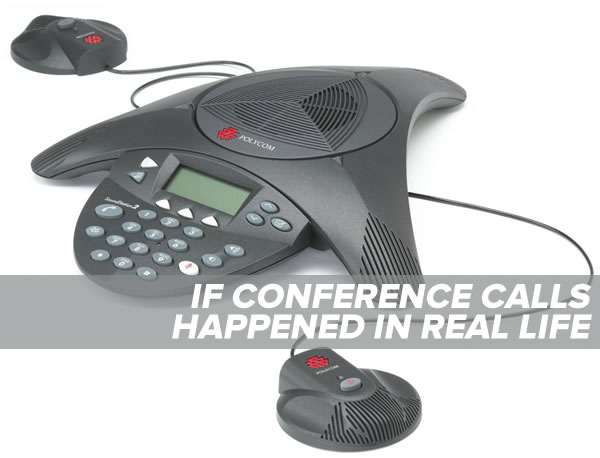
Our line of work puts us right in the middle of the mobile and telecom industries, so it’s only natural that we work with a number of employees, suppliers, partners, and customers not just across the US, but around the world as well. As a result, a daily part of a lot of our lives — mine included — is the conference call.
Conference calls have many advantages, including allowing global teams to meet and collaborate, reducing travel time and costs, and creating the kind of “work anywhere, any time” flexibility that fits busy lives. They also have their disadvantages, which are sent up hilariously in this video by the comedy film duo of Tripp and Tyler, titled A Conference Call in Real Life:
Here’s a classic piece of not-so-savory tech culture. It’s a video featuring Jakob Lodwick, then a partner at Connected Ventures, the people behind CollegeHumor, Busted Tees and Vimeo, giving a grand tour of the office. He opens the tour by emphasizing that the office is full of “young, vibrant” people — he was in his twenties at the time. Around the 4:35 mark, the video goes deeper into the topic of “old people” — that they just don’t get the internet and can’t come up with new ideas. To help save your startup from the scourge of “The Olds”, Lodwick proceeds to give the viewer tips on how to use slinkies to get rid of old people, and even an example of how they harassed an older employee into leaving. After all, you need to replace them with young people with “vibrant new ideas” and who just oh-so-conveniently happen to be in Lodwick’s demographic:
It’s hard to tell how much of this in tongue–in-cheek — in fact, Lodwick himself may not be too sure how much of what he said is tongue-in-cheek. It’s part of the zeitgeist, in this age where not only young influential-if-douchey techies like Facebook CEO Mark Zuckerberg declare that “Young people are just smarter”, but even older ones as well: witness Dave Winer’s recent “Only hire young males, but I didn’t say it” piece, which he wrote at the sprightly age of 58. It highlights a long-standing problem in Silicon Valley: they’ve got an ageism problem, and it’s getting sillier.
Memo to Connected Ventures: Maybe it’s time to get this video taken down, for PR’s sake. Just sayin’.
In a recent article in The New Republic titled The Brutal Ageism of Tech, there’s an interview with Dr. Seth Matarasso — described in the article as “a reality-show producer’s idea of a cosmetic surgeon”, who says “Love me, mean it,” instead of “goodbye” — who has a practice in San Francisco. A lot of his work lately has come from men in the tech industry who need to look younger in order to get ahead. Worse still, the men coming to see him are getting younger; he’s turned away applicants still in their twenties.
Hey, I’m no opponent of youthful vigor, but it’s not the only thing. There’s a lot to be said for being seasoned and having experience too. Besides, twenty-somethings creating products that twenty-somethings will buy may be profitable in the short term, but may turn out to be bad for products in the long run, as the New York Times points out.
If it’s good not to be old in the Valley, it’s also good not to be a woman. From people using photos of their ex-girlfriends in presentations with their faces blotted out and replaced with the word “bitch”, to Julie Ann Horvath’s departure from GitHub, to the threats directed against Adria Richards, to the guys at Penny Arcade and their “Dickwolves” shenanigans, and the general formula for treating women in tech, it’s no wonder that PC’s Sascha Segan doesn’t want his daughter working in Silicon Valley.
If’s it’s not good to be old or a woman in the Valley, it’s also good not to be poor, and that’s “poor” from a techie’s point of view. From the Google Bus culture/class war to Greg Gopman’s Facebook rant about how the homeless won’t stay in their place (and the chorus of me-too’s) to Sarah Lacy’s unsympathetic view of the people who are too damn lazy to build a tech company and just operate public transit instead to know-nothing libertarian (which increasingly is losing its original intent and becoming “freedom for me, corporate control for thee”) suggestions that 911 emergency calls come with a charge of $100 to “weed out the noise”, there’s this growing notion in the Valley (and hey, Wall Street too) that bad bank balances mean bad character, that not getting paid nice techie wages is some kind of punishment for a moral failing.
There are enough stories about programmers being dicks that there’s a Tumblr called — wait for it — Programmers Being Dicks.

What’s it going to take for us to pull our own entitled heads out of our entitled asses? It’s going to take some effort, empathy — be sure to read Reg “raganwald” Braithwaite’s excellent piece on the subject — and the courage to speak out whenever this kind of dickery pops in our industry. It’s not easy, but hey, neither is programming, and we’re up for that challenge, right?
The infographic below is just about a year old, but I missed it the first time around, and its information is still relevant. Its big point: the United States is experiencing the highest level of entrepreneurship in more than a decade:
Click the infographic to see it at full size.
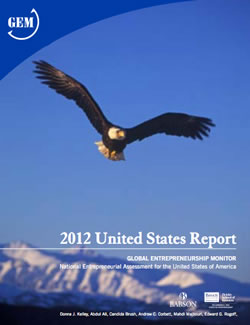 The content of the infographic is a distillation of the Global Entrepreneurship Monitor’s (GEM) 2012 US Report, which says the US is seeing the highest level of entrepreneurship since 1999, when GEM first started producing these reports.
The content of the infographic is a distillation of the Global Entrepreneurship Monitor’s (GEM) 2012 US Report, which says the US is seeing the highest level of entrepreneurship since 1999, when GEM first started producing these reports.
Having just joined an established entrepreneurial company and working from a home office in Florida, some observations in the report were of great interest to me. See if you can spot them:
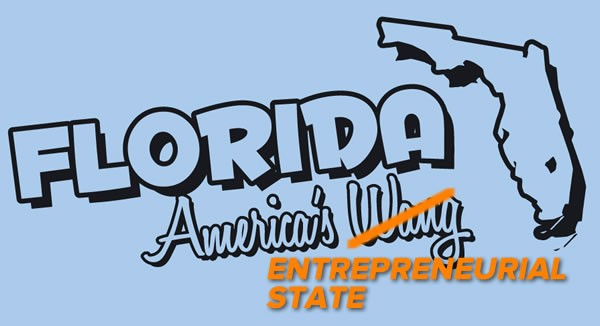
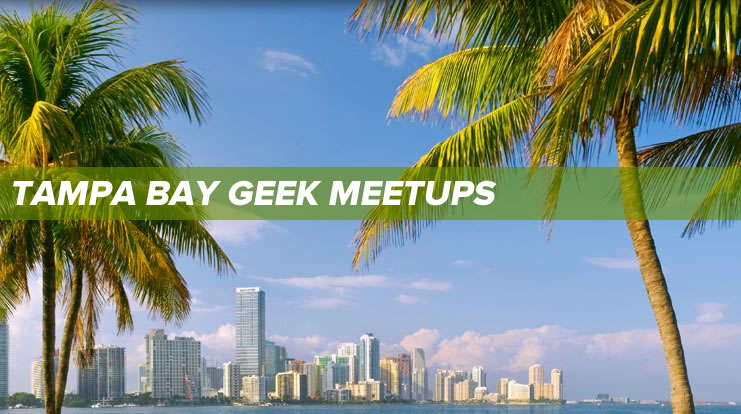
If you’re a geek in the Tampa Bay area looking for something to do tonight, there are a number of meetups tonight that might be right up your alley…
 I’m going to my first Tampa Bay area meetup: Tampa Bay Cocoaheads. Tonight’s topic will be Do’s and Don’ts of Adding HTML to Your Apps, and the description is as follows:
I’m going to my first Tampa Bay area meetup: Tampa Bay Cocoaheads. Tonight’s topic will be Do’s and Don’ts of Adding HTML to Your Apps, and the description is as follows:
Sooner or later someone is going to ask you to put HTML in your app. Instead of holding up two fingers like a cross at a vampire or defaulting to some solution like PhoneGap it’s better to know how it works under the covers so you can tailor it to your app and preserve a good use experience.
Here we will look at how iOS apps talk to an HTML stack and vice versa and we will dive into do’s and don’ts to keep you out of the rabbit hole.
I won’t be able to make this month’s Tampa Bay Ruby Brigade meetup, but I’m aiming to catch next month’s gathering. Tonight’s meetup is a social night and also features a talk called Words of Encouragement. Here’s the writeup:
Brian Burridge has volunteered to give a talk titled “words of encouragement”, sharing a few words with everyone about something he’s learned over 20 years in tech that has been on his mind the last few weeks.
I also have some ideas for some group programming activities we can do so I will bring the projector and screen if there is interest.
Also taking place tonight: the PHP as a Social Activity meetup is having a “Meet and Greet”…
PHP is a powerhouse in the programming world and so is its community. As members of its ever growing support system and a community of PHP enthusiasts, our goals of spreading the joy of PHP and helping our fellow PHPers starts with each other. Meet & Greet is a way of introducing ourselves to each other, asking questions big and small, getting feedback, and discussing future directions.
And finally, for those of you with an entrepreneurial bent, Startup Grind Tampa Bay is having a meetup featuring LaunchTrack’s Jonathan Cordeau:
Jonathan Cordeau is the Founder & CEO of LaunchTrack (http://www.launchtrack.com), the only ticketing solution that helps organizations build relationships by leveraging data. LaunchTrack has recently completed 500 Startups’ accelerator program (http://500.co/accelerator/) in Silicon Valley. Jonathan founded two previous companies to successful exits. He has an extensive background in the event industry, producing over 250 national events for artists such as Maroon 5, Jessica Simpson and Queens of the Stoneage. Jonathan is eager to share what he learned about startups strategy, the lean startups methodology, fundraising and more, through his experience working with the 500 Startups team and the all powerful Sith Lord Dave McClure.
Jonathan is actively involved in supporting sports based youth enrichment programs, and charitable organizations. Jonathan lives in Tampa with his wife and two young daughters.